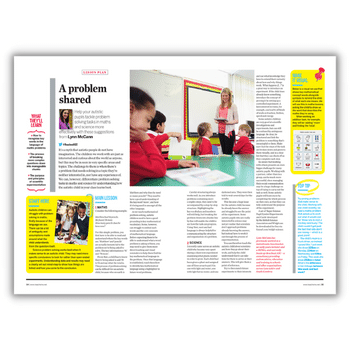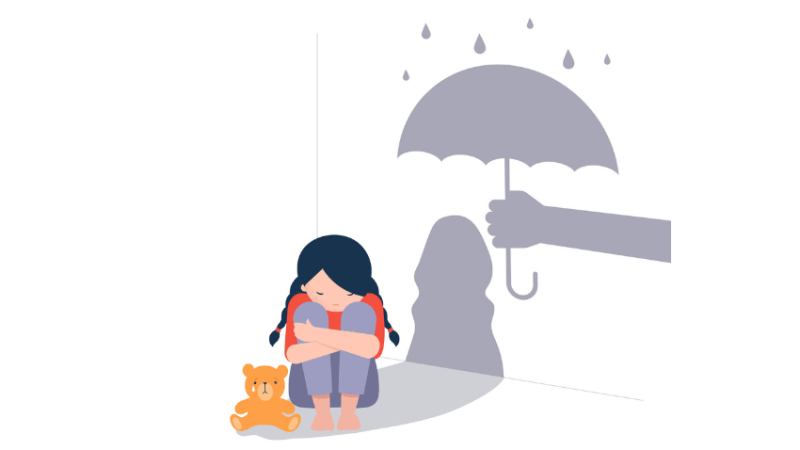“We’re all learners with SEN now” – Our social, emotional and mental health needs at a time of uncertainty

Instead of seeing children with SEN as a subset of students requiring ‘additional support’, we ought to acknowledge that in the post-COVID age, we're all effectively SEN learners now, writes Daniel Sobel…

- by Daniel Sobel

Michel Foucault once argued that madness is an unacceptable strangeness in others’ eyes. We can at least gain some solace from the knowledge that we’re presently going through the same madness together, and that there’s no room for feeling weird in comparison.
In any other year, if I told you I’d been locked in my house, isolated from everyone and only just emerging after five months, you would either assume that I’d been quite ill – perhaps with an auto-immune compromise that necessitated me to stay distanced, or with some serious anxiety disorder. At any rate, a pathology of some kind, be it physical or psychological.
The inescapable fact is that we have experienced a psycho- or physical- pathology together. The term ‘together’ only just veils the trauma, lending it a ‘normal for 2020’ feel. We have collectively experienced the fatigues of social isolation and anxieties on literally a pandemic scale. All of have undergone stressful situations with our families, irrespective of our living situation. We have all been challenged individually, but these individual challenges have been somewhat shrouded by our collective experience.
Exclusionary groups
Children with SEN are often presented as needing ‘additional’ support. This type of language around SEN bothers me, because it always somehow ends up creating this ‘other’ group, which almost by definition evokes the sense that this grouping is exclusionary in nature.
However, our collective return to school is going to be a challenge for everyone. Now we all have ‘additional’ and special needs – some which may vary from one day to the next, or even over the course of any given day. It would certainly be inappropriate to think that children with SEN are so significantly different in these circumstances that we need to concoct a different plan for them altogether.
Children already living with their own set of daily stressors will actually exhibit far higher levels of general resilience. The child who cannot walk, the child who is being abused at home, the child who doesn’t understand their lessons – each will require high levels of different types of resilience and coping strategies beyond the capacity of most children. It would be an error to think that children with SEN are the ones we need to worry about as a collective – do we need more more neediness?
Instead, let’s assume that a labelled or unlabelled student of any type may well be struggling. Don’t quote me on that, though – just recently, a virtual head told me that she was expecting a ‘significant increase in problems with looked after children’. Really, we’re all just guessing.
That said, there’s a lot of good guessing going on. Experts in psychology, education and sociology from all over are writing articles and giving advice on an issue we have no real experience of. It would be disingenuous of me to present this article as anything other than my own educated guess, so I’d like to draw on one precedent for returning to school after a significant period of absence – the experiences of children who have been off with long-term illness.
They will experience many issues, but we can focus here on three common ones that seem likely to impact us in similar ways.
Social reintegration
It’s easy to forget that one of the fundamental principles of school education is the concept of socialisation – learning how to integrate with society. In recent years we seem to have developed tunnel-vision with respect to grades. It may outwardly appear that children have successfully slotted back in, that they’re laughing with each other and therefore all is well. In fact, we’ve interrupted their social learning, with the result that mixing in a large group setting may cause them stresses. It would be a mistake to think some students won’t find this a challenge – heck, plenty of staff will too.
I know of one school that has invested in big marquee tents in order to ‘house’ the children on site together for however long is necessary without actually doing any work in the classrooms. The head’s explanation is that she’s prioritising the social and emotional health of the children above and beyond anything else. When the staff feel that the children (and their colleagues) are ready to ‘go to school’ in the traditional way, they will transition back to learning in the classrooms.
Until then, it’s days filled with social encounters, games, lessons in emotional awareness and so on – activities oriented around learning to be human again in the way we interact with others. I wouldn’t advocate every school taking such an approach – partly dependent as it is on how well trained the staff are – but doing nothing at all and simply ‘carrying on as normal’ is to be psychologically neglectful.
Reflect as you go
You will see outward signs of lethargy, rattiness or sickness. Traditional misbehaviours and tearfulness might seen in school less often than before, though it’s likely that parents will bear the full brunt when their children return home emotionally exhausted. Expect phone calls. Better still, pre-empt them by calling home regularly for brief chats, ensuring that you try to touch base with the 20% most vulnerable and challenging homes.
As you would for any vulnerable child, make your internal systems clear enough that anyone can easily seek support. There should be some staff dedicated to the task of checking in with their colleagues and passing on details of how they are doing. Reflect as a team or department on how things are going. Ask yourselves how you and your students are coping – once a day at first, then every other day.
The key here is to be mindful of any potential concerns and to reflect as you go. This may seem obvious, but you can bet that many schools won’t be doing that. The danger is summed up in that classically British “Keep calm and carry on” sign – just plough on, we’ll get through this. Denial in the face of psychological truth.
Overwhelmed
Before lockdown I was regularly travelling around the country giving talks and attending meetings. My first such engagement post-lockdown was in July, and involved me travelling from London to Oxford for a one-hour meeting. It was utterly exhausting. Unlike Dominic, I hadn’t been on any long car journeys for months and I found it tiring. The meeting itself felt like a strain. I came home and had to lie down. Like my muscle tone, I found that my ‘business as usual’ skills had gone limp, with everything seeming to require much more effort than it did before, but consoled myself with the knowledge that these would eventually be restored.
Now, this is where children with SEN may well struggle a bit more. It’s an issue is common among children who go through school not quite grasping the routines, or overexerting themselves with additional activities, such as straining to concentrate or feeling overwhelmed by the sights and sounds with sensory overload. These factors are helped by rhythms and routines, and for most SEN and vulnerable students, it can be like starting from scratch.
Wherever possible, start with a minimised timetable and work this up over a period of around six weeks or so. If you have no practical way of doing this, try to instead build in breaks throughout the day. By whatever means necessary, go slow and reduce your expectations significantly.
Think about giving it one or two terms before you’re fully back up to speed. I appreciate that this could well be disrupted by goodness knows what news over the coming months, but we can only plan, right? The period of two terms is the most obvious unit of time to measure for soft impact data. Typically, if you’re unable to identify any significant impact over that amount of time, the measure’s a no-go. Use this to schedule your thinking around reintegration.
Above all, manage the expectations you have of yourselves, your staff and your students. Of course, there will always be some staff who are relieved and positively gung-ho about getting back to the grind. Plenty of students will feel the same, but their collective resilience will nonetheless be low. Don’t just jump into a full regime of expectations around learning and homework – foolish is the school that prioritises grades over mental health.
Browse resources for Mental Health Awareness Week.











